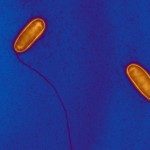Link to Pubmed [PMID] – 26594043
Nat. Rev. Microbiol. 2016 Jan;14(1):5-19
Many bacterial pathogens have evolved the ability to subvert and exploit host functions in order to enter and replicate in eukaryotic cells. For example, bacteria have developed specific mechanisms to target eukaryotic organelles such as the nucleus, the mitochondria, the endoplasmic reticulum and the Golgi apparatus. In this Review, we highlight the most recent advances in our understanding of the mechanisms that bacterial pathogens use to target these organelles. We also discuss how these strategies allow bacteria to manipulate host functions and to ultimately enable bacterial infection.




